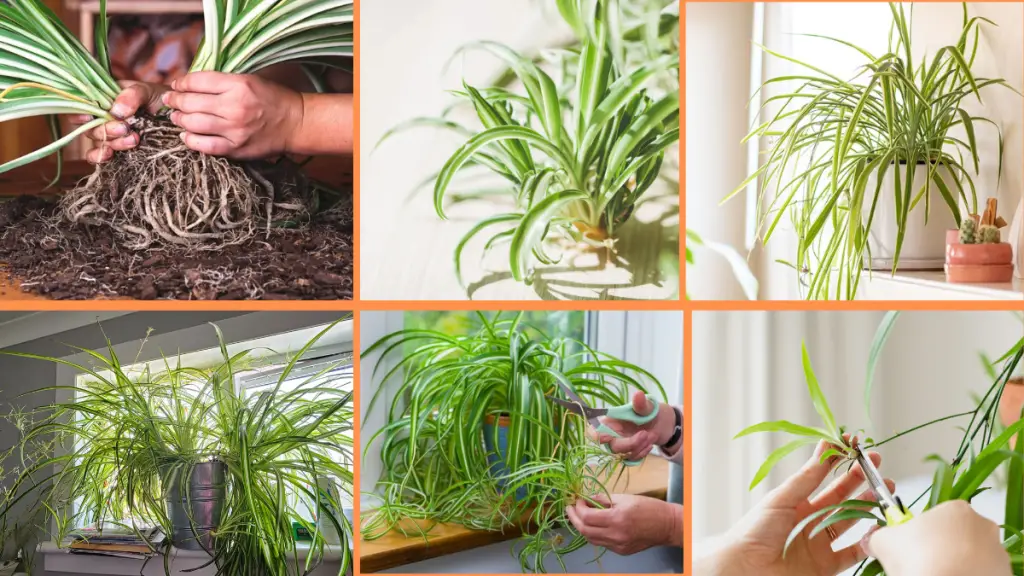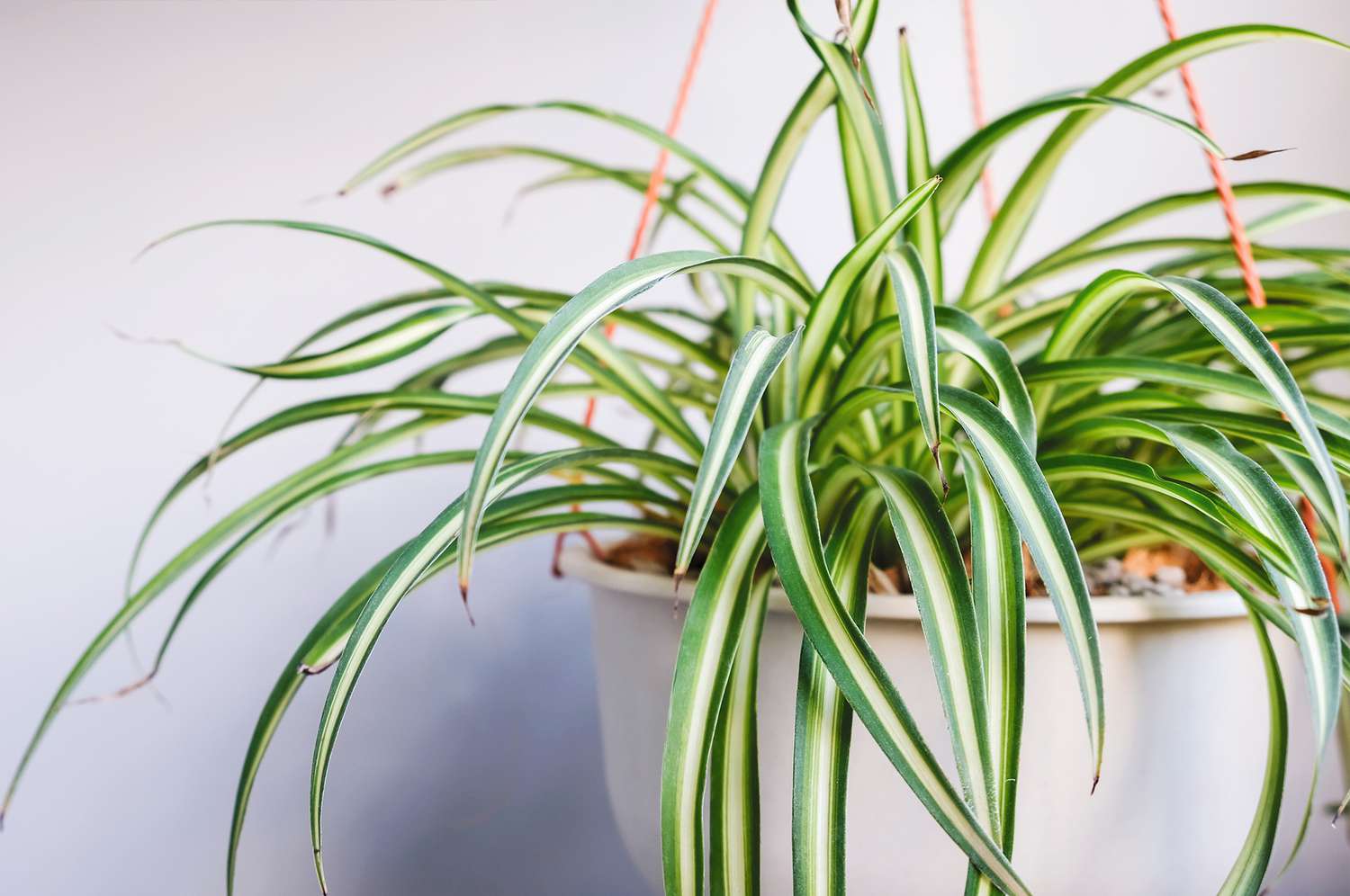Spider plants (Chlorophytum comosum) are among the most beloved houseplants—and for good reason. They’re easy to care for, incredibly adaptable, and produce charming little “babies” that hang like ornaments from their arching leaves. If you’re looking for a low-maintenance indoor plant that brings greenery and air-purifying benefits, spider plants are an excellent choice.
In this guide, we’ll walk you through everything you need to know about how to grow spider plants, including planting, care, troubleshooting, and propagation.
What Is a Spider Plant?
The spider plant is a fast-growing perennial native to tropical and southern Africa. It features long, slender leaves that can be solid green or variegated with white stripes. As the plant matures, it sends out long stems with baby plants (called “pups” or “plantlets”) and tiny white flowers, giving it a cascading, fountain-like appearance.
Spider plants are known for their air-purifying properties and their ability to thrive in a wide range of conditions, making them ideal for beginners and busy plant parents alike.
Ideal Conditions for Growing Spider Plants
Before diving into care routines, it’s important to understand what spider plants need to thrive.
✅ Light Requirements
Spider plants prefer bright, indirect light. A spot near an east- or north-facing window is ideal. Too much direct sunlight can scorch the leaves, while too little light can lead to pale, limp growth.
🌿 Tip: If your spider plant’s leaves start to lose their variegation, it may need more light.
✅ Temperature and Humidity
Spider plants grow best in temperatures between 65°F to 80°F (18°C to 27°C). They dislike cold drafts and frost, so avoid placing them near doors or windows that open frequently in winter.
They appreciate moderate humidity, but they can tolerate drier air—making them perfect for most households. In very dry climates, occasional misting or a humidity tray can help.
✅ Soil Type
Use a well-draining potting mix—a standard houseplant mix works great. You can also add a bit of perlite or sand to improve drainage. Spider plants don’t like soggy roots, so avoid heavy, compacted soils.
✅ Container & Drainage
Always plant your spider plant in a pot with drainage holes. This prevents water from sitting in the bottom and causing root rot. Terracotta pots are a good choice because they allow moisture to evaporate more easily than plastic.

How to Plant or Repot a Spider Plant
Step-by-Step Planting or Repotting Instructions:
- Choose a pot that’s 1–2 inches larger in diameter than the root ball.
- Add potting mix to the bottom of the pot.
- Gently remove the plant from its old container, shaking off excess soil.
- Place the root ball in the new pot and fill in around it with fresh soil.
- Water thoroughly and allow excess water to drain out.
- Place in a bright location, away from direct sun.
🪴 Repot your spider plant every 1–2 years in spring, especially if it becomes rootbound or outgrows its pot.
Watering a Spider Plant: How Often Is Best?
Spider plants prefer consistently moist but not soggy soil. Here’s a general guideline:
- Water once a week during the growing season (spring/summer).
- Reduce to every 10–14 days in fall and winter.
Let the top inch of soil dry out before watering again. Always empty any excess water from the saucer after watering.
⚠️ Yellowing or mushy leaves often indicate overwatering, while dry, brown tips can signal underwatering or low humidity.
Feeding Your Spider Plant
Feed your spider plant with a balanced, water-soluble houseplant fertilizer (e.g., 10-10-10 or 20-20-20) once a month during the growing season.
Do not fertilize in winter when the plant is dormant. Over-fertilizing can cause brown leaf tips and salt buildup in the soil.
Common Problems and How to Fix Them
Brown Leaf Tips
- Cause: Fluoride in tap water, low humidity, over-fertilizing, or salt buildup.
- Fix: Use filtered or distilled water and flush soil occasionally with fresh water.
Pale or Limp Leaves
- Cause: Low light or root rot.
- Fix: Move to a brighter spot and check for signs of overwatering.
Pest Issues
Spider plants are generally pest-resistant, but they can occasionally attract:
- Aphids
- Spider mites
- Mealybugs
Use insecticidal soap or neem oil to treat infestations.
How to Propagate Spider Plants
One of the most fun things about growing spider plants is propagating them. Here’s how:
1. Wait for Plantlets to Appear
Mature spider plants send out long stems with baby spider plants on the ends. Wait until the pups are a few inches long and have visible roots.
2. Clip the Pups
Use clean scissors to snip the plantlet from the mother plant, cutting close to the base of the pup.
3. Rooting in Water or Soil
- Water Method: Place the plantlet in a glass of water, roots down. Once roots are 1–2 inches long, transplant to soil.
- Soil Method: Plant the baby directly in a small pot with moist soil, and keep it in bright, indirect light.
4. Care for New Plants
Keep the soil slightly moist for the first few weeks. Once established, treat them like mature spider plants.
Indoor Spider Plant Styling Ideas
Spider plants are incredibly versatile in home décor. Try these ideas:
- Hang them in macrame hangers to highlight their cascading leaves.
- Place them on high shelves so pups can dangle over the edge.
- Use as bathroom plants—they enjoy the humidity.
- Cluster them with other low-maintenance plants for a green corner.
FAQs About Growing Spider Plants
Yes! Spider plants are non-toxic to cats and dogs, although some pets might nibble on the leaves.
Mature plants can reach 12–18 inches tall and 24–36 inches wide. The runners can add even more visual drama.
Yes, in USDA zones 9–11, they can grow outdoors as perennials. In colder zones, treat them as annuals or overwinter them indoors.
It could be due to insufficient light or plant maturity. Increase light exposure and wait until the plant is mature enough (usually 1–2 years old).
Final Thoughts: Growing Spider Plants Is Easy and Rewarding
Spider plants are the perfect houseplant for beginners and seasoned growers alike. With just a little light, water, and love, they’ll reward you with lush growth and adorable babies to propagate and share. Whether you’re looking to green up your kitchen, living room, or office, spider plants are a timeless choice.
So grab a pot, some soil, and let your spider plant journey begin today!

